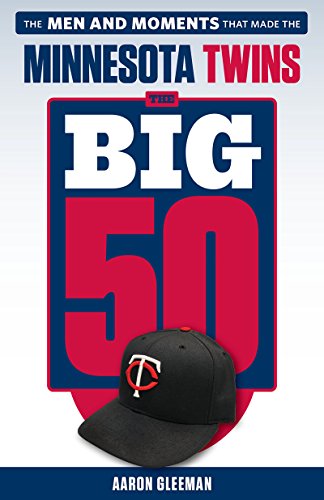October 18, 2006
Small-Ball Stats
While poking around the stats section of Fan Graphs doing the research for Monday's season-ending Win Probability Added update, I stumbled across some interesting numbers on the Twins' small-ball tendencies. Much is always made of the Twins "doing the little things" (regardless of it's validity) and that was played up even more than usual this year because of the "piranhas" nickname Ozzie Guillen gave to the light-hitting portion of the lineup.
With that in mind, I decided to look a little further into how often and how well the Twins slapped, ran, and bunted their way onto the bases in 2006.
INFIELD HITS
Luis Castillo 40
Nick Punto 13
Justin Morneau 11
Torii Hunter 11
Michael Cuddyer 9
Joe Mauer 8
Rondell White 8
Jason Tyner 7
Jason Bartlett 7
Shannon Stewart 7
Lew Ford 4
Jason Kubel 3
Tony Batista 3
It's not surprising to see Luis Castillo with a ton of infield hits, because no player in baseball puts the ball on the ground more often. Castillo hit a ground ball on an MLB-leading 61.5 percent of his balls in play this season, which is amazing when you consider no other hitter was at 60 percent and a total of just seven other guys cracked 55 percent. Take a huge percentage of ground balls, add in a primarily left-handed batter with good speed, and you get 23 percent of Castillo's hits never leaving the infield.
While Castillo's 40 infield hits led the Twins by a wide margin, Ichiro Suzuki actually came up with 41 infield hits to narrowly lead all of baseball. Like Castillo, Ichiro is a speedy left-handed hitter (although he doesn't play on turf). It's certainly not shocking to see guys like Castillo and Ichiro racking up infield hits, but it is surprising to see Justin Morneau with 11 of his own. Some players with fewer infield hits than Morneau: Carlos Beltran, Scott Podsednik, Grady Sizemore, Brian Roberts.
Equally surprising is that Jason Kubel and Tony Batista somehow managed three infield hits apiece. Kubel because he could barely hobble down the first-base line for much of the season after his knee problems flared up and Batista because he runs like a ballerina carrying a piano on her back. Looking instead at infield hits as a percentage of ground balls (which adjusts for playing time and hitting style), Castillo (12.7), Shannon Stewart (9.5), Nick Punto (7.3), and Jason Tyner (7.1) led the team.
BUNT HITS BH PERCENTAGE
Jason Tyner 10 Jason Tyner 76.9
Nick Punto 7 Joe Mauer 75.0
Joe Mauer 6 Jason Bartlett 40.0
Luis Castillo 4 Nick Punto 26.9
Jason Bartlett 2 Luis Castillo 17.4
Tyner led the team with 10 bunt hits despite playing 62 games, which is impressive on several levels. Projected out to a full-season's worth of playing time, Tyner would have led all of baseball with 25 bunt hits. Tyner successfully bunted for a hit on 77 percent of his attempts, which is remarkable given that 15 percent of his hits came via the bunt. To put that in some context, Corey Patterson, Willy Taveras, and Juan Pierre led baseball with 21 bunt hits, but were successful 51, 43, and 43 percent of the time.
Joe Mauer also did well bunting this year, dropping down six bunt hits while successfully converting three-fourths of his attempts. While Tyner did his bunting against drawn-in defenses that expected him to do so, Mauer laid his bunts down by picking spots when opposing third basemen were playing very deep, catching defenses off guard. Mauer didn't do it often, with bunts accounting for just three percent of his total hits, but it was another effective aspect of his wide-ranging offensive attack.
At the other end of the spectrum is Castillo, who often bunted and rarely got a hit. Despite faking a bunt to begin seemingly every plate appearance, Castillo managed just four bunt hits all year. His bunt-hit percentage shows how inefficient he was at something he builds his game around. In fact, among all MLB non-pitchers with at least four bunt hits, only Cory Sullivan (13.5) had a lower success rate than Castillo's 17.4 percent. If Castillo bunted in 2006, it was either a botched hit attempt or a sacrifice.
Last but not least, no look at small ball could possibly be complete without examining the running the Twins did once they were on base. As a team, they ranked sixth in the league with 101 stolen bases and ranked fourth in the league with 42 times caught stealing, which means they generally did a good job picking spots to run. Within that team-wide success, however, was some pretty bad running from several guys.
As a general rule, you need to be successful at least 70 percent of the time for a stolen-base attempt to be at all worthwhile. The break-even point can change some depending on the specific situation--the number is often closer to three-fourths, but can sometimes drop closer to two-thirds in the late innings of a tight game--but for the most part each time you're thrown out wipes away around 2.3 steals. Using the 70 percent success rate as a baseline, here's what the Twins posted in "net steals" this year:
SB CS NET
Lew Ford 9 1 +7
Michael Cuddyer 6 0 +6
Nick Punto 17 5 +5
Jason Kubel 2 0 +2
Joe Mauer 8 3 +1
Shannon Stewart 3 1 +1
Luis Castillo 25 11 0
Jason Tyner 4 2 -1
Rondell White 1 1 -1
Juan Castro 1 1 -1
Torii Hunter 12 6 -2
Jason Bartlett 10 5 -2
Tony Batista 0 1 -2
Josh Rabe 0 1 -2
Terry Tiffee 0 1 -2
Justin Morneau 3 3 -4
TEAM TOTAL 101 42 +4
For all the running the Twins did, everyone but Lew Ford, Michael Cuddyer, Punto, and Mauer probably would have been better off staying put. Castillo led the team with 25 steals, but added nothing in terms of scoring additional runs because he was thrown out 11 times. Similarly, Torii Hunter, Jason Bartlett, and Tyner likely cost the team runs by being thrown out on one-third of their attempts. The entire team had four "net steals" on 143 attempts and the Twins were actually one of the AL's better running teams.
UPDATE: The Twins went 31-for-37 (84 percent) stealing bases in "close and late" situations, when the break-even point is at its lowest. That's excellent and likely helped them win a number of tight games. On the other hand, that means the Twins were 70-for-106 (66 percent) in "regular" situations, which is an awful success rate when the break-even point is high and likely took a number of runs off the board early in games.
Overall, the Twins hurt themselves quite a bit when stealing just for the sake of stealing, but did very well when taking the extra base was crucial late in a tight game. Interestingly, Castillo was an amazing 10-for-11 in "close and late" spots, but a putrid 15-for-25 (60 percent) at all other times. Mauer (5-for-5), Bartlett (2-for-2), Tyner (2-for-2), and Cuddyer (2-for-2) were perfect close and late, while Hunter was caught on two of his three attempts.

